- Add new school
- Provide access to existing school
- Private schools
- England / UK
- USA / America
- Switzerland
- University preparation
- Netherlands
- Universities Abroad
- Kids language camps
- Secondary school education
- Boarding schools
- Higher education abroad
- Learning languages
- English courses abroad
- English courses in England
- English courses in USA
- English courses in Ireland
- English courses in Canada
- Primary, secondary education
- Higher education
- Adult language courses
- Academic languages
- Language test preparation
- Business courses
- Online courses
- United Kingdom
- United Arab Emirates
- private school
- language school
- boarding school
- international college
- public school
- About Smapse Education
- Why work with us
- Why trust us
- Client's reviews
- Arranging your studies
- Financial guaranties
- Customer video reviews
- Services and prices
- Immigration and citizenship
- Scholarships
- Tutoring and preparation for schools, universities abroad
- Advertising
- Group travel
- For teachers
- Terms of partnership (for agents)
- Instructions (for agents)
- FAQ (for agents)
- For schools
- Educational fairs
- Nizhny Novgorod

Volga Research Medical University

Description of Volga Research Medical University
- Founded: 1920
- Location: Nizhny Novgorod, Russia
- Number of students: more than 3,000
- Rating in Russia: 22.
The Volga Research Medical University was founded in 1920 and for a long time had the status of an institute: during the years of World War II front-line doctors were trained here, much attention was paid to the training of surgeons. From the first day, the university was constantly evolving and soon received the status of the Academy, and in 2018 it became a university. The teaching staff consists of more than 700 specialists, many of whom are professors. Training is possible in Russian and English.
Among all the faculties and specialties at the university, surgery, pharmaceuticals, dentistry and therapy are very popular. University staff conduct research in the field of biomedicine, dentistry, surgery, orthopedics, a lot of time and effort is spent on studying the behavior of cancer cells and finding ways to treat this disease. Dentures and implants for maxillofacial surgery are also being developed here.
Among the famous graduates and teachers of the university are two distinguished professors and scientists: Nikolai Sinitsyn and Boris Korolev. They made a huge contribution to medicine, published dozens of scientific papers.
Students with high rates receive a scholarship from 1570r. per month, graduate students - 7400r. per month. Competitions are held for the most talented with the opportunity to receive a grant from the President of the Russian Federation for research work.
Programs and prices, tuition fees in Volga Research Medical University
Training courses.
- Age: 16+ years
- Dates: year-round
- Duration: 1-12 months
- Cost: from 30,000 rubles per item.
Courses allow you to increase the chances of admission. Recommended for international students - this is an excellent practice of the Russian language.
- Age: 17+ years old
- Dates: September-June
- Duration: 4 years
- Cost: from 49900 rubles per year.
The main course of study, which opens up a further choice for determining the specialty.
- Age: 21+ years
- Duration: 1-2 years
- Cost: from 102 900 rubles per year.
Students actively study their chosen specialization, gain skills and conduct research. For the specialty "Pharmacy", the passing grade is from 228.
- Age: 21+ year
- Duration: 2 years
- Cost: from 165 000 rubles per year.
Admission is based on the test results (from 70 points).
Graduate school
- Duration: 3-4 years
- Cost: from 127 900 rubles per year.
Enrollment - after a personal interview. The postgraduate diploma provides great opportunities for a medical career.
Accommodation, meals, prices
The university has 5 hostels designed for 1965 places: first of all, rooms are provided to foreigners and nonresident, socially unprotected students (persons with disabilities, orphans). The cost of living in a hostel is only 720-900 rubles per month. You can eat at the university in the dining room or cafe.
Activities Volga Research Medical University
The university does not forget about sports culture: sections are open, sports grounds and gyms work. Also on the basis of the university opened a health camp on the Volga. For those who want to get additional knowledge, foreign language courses are offered: English, French, German.
Facilities and equipment at Volga Research Medical University
Volga Research Medical University has 8 educational buildings and 4 research centers. A simulation center also functions for students: practical skills are developed on mannequins that optimally copy the structure and behavior of the human body. Simulators allow you to gain experience without any harm and risk.
The university has its own museum of topographic anatomy and operative surgery, there is a library with a large collection of paper publications and electronic copies. On the basis of the university there are dentistry and a clinic.
Admission dates and extra charges
The academic year at the university is divided into 2 semesters: autumn and spring. Additional costs range from $ 334 to $ 682 per month for renting a room or apartment (with a lack of places in the hostel) and meals.
Entry requirements, how to apply, what is required to enrol
The university admission campaign is held from June 20 to July 26. For admission it is necessary to pass exams and a number of documents: certificate (or diploma of previous education), application, photos, copies of passport. It is important for foreign students to provide notarized copies of documents.
Institution on the map
Residence permits, citizenship and other services.
- Guardianship services during the studies
- Student supervision
Review about Volga Research Medical University
Recommendations on when to apply, similar educational institutions.

Interested in studying in Volga Research Medical University?
Explore more than just language.

Join us and stay up to date with the latest news and promotions!
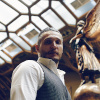
30 Best universities for Mechanical Engineering in Moscow, Russia
Updated: February 29, 2024
- Art & Design
- Computer Science
- Engineering
- Environmental Science
- Liberal Arts & Social Sciences
- Mathematics
Below is a list of best universities in Moscow ranked based on their research performance in Mechanical Engineering. A graph of 269K citations received by 45.8K academic papers made by 30 universities in Moscow was used to calculate publications' ratings, which then were adjusted for release dates and added to final scores.
We don't distinguish between undergraduate and graduate programs nor do we adjust for current majors offered. You can find information about granted degrees on a university page but always double-check with the university website.
1. Moscow State University
For Mechanical Engineering
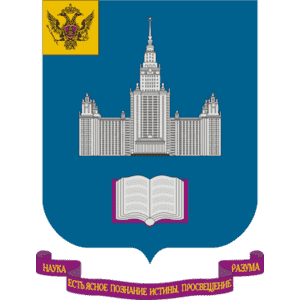
2. Bauman Moscow State Technical University
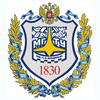
3. National Research University Higher School of Economics

4. Moscow Aviation Institute
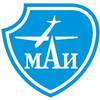
5. N.R.U. Moscow Power Engineering Institute
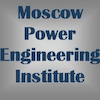
6. National Research Nuclear University MEPI

7. National University of Science and Technology "MISIS"
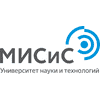
8. Moscow Institute of Physics and Technology

9. Moscow State Technological University "Stankin"
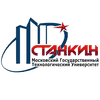
10. RUDN University
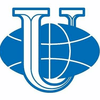
11. Moscow Polytech

12. Moscow State University of Railway Engineering
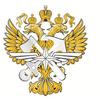
13. Finance Academy under the Government of the Russian Federation

14. Moscow Medical Academy
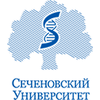
15. Russian State University of Oil and Gas
16. mendeleev university of chemical technology of russia.
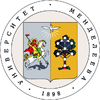
17. Russian National Research Medical University

18. Plekhanov Russian University of Economics
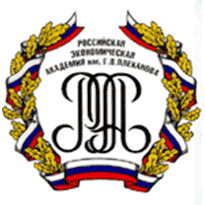
19. National Research University of Electronic Technology

20. Moscow State Pedagogical University
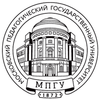
21. Russian Presidential Academy of National Economy and Public Administration
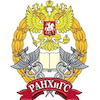
22. State University of Management

23. Moscow State Institute of International Relations
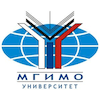
24. Russian State Geological Prospecting University
25. russian state agricultural university.
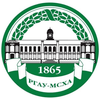
26. New Economic School
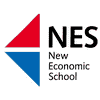
27. Moscow State Technical University of Civil Aviation

28. Russian State University for the Humanities
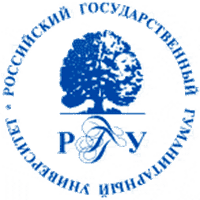
29. Russian State Social University
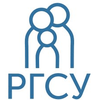
30. Moscow State Linguistic University
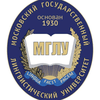
Universities for Mechanical Engineering near Moscow
Engineering subfields in moscow.
Whole genome sequencing of elite athletes
Affiliations.
- 1 "Omics Technologies" OpenLab, Kazan Federal University, Kazan, Russia.
- 2 Department of Molecular Biology and Genetics, Federal Research and Clinical Center of Physical-Chemical Medicine of Federal Medical Biological Agency, Moscow, Russia.
- 3 Institute for Genomic Statistics and Bioinformatics, University Hospital Bonn, Bonn, Germany.
- 4 Department of Biochemistry, Biotechnology and Pharmacology, Kazan Federal University, Kazan, Russia.
- 5 Laboratory of Molecular Genetics, Central Research Laboratory, Kazan State Medical University, Kazan, Russia.
- 6 Department of Biochemistry, Kazan State Medical University, Kazan, Russia.
- 7 Sport Technology Research Center, Volga Region State Academy of Physical Culture, Sport and Tourism, Kazan, Russia.
- 8 Department of Theory and Methodology of Combat Sports, Volga Region State Academy of Physical Culture, Sport and Tourism, Kazan, Russia.
- 9 Department of Physical Education, Financial University under the Government of the Russian Federation, Moscow, Russia.
- 10 Department of Physical Education, Plekhanov Russian University of Economics, Moscow, Russia.
- 11 Institute of Sport - National Research Institute, Warsaw, Poland.
- 12 Research Institute for Sport and Exercise Sciences, Liverpool John Moores University, Liverpool, United Kingdom.
- PMID: 32879552
- PMCID: PMC7433326
- DOI: 10.5114/biolsport.2020.96272
Whole genome sequencing (WGS) has great potential to explore all possible DNA variants associated with physical performance, psychological traits and health conditions of athletes. Here we present, for the first time, annotation of genomic variants of elite athletes, based on the WGS of 20 Tatar male wrestlers. The maximum number of high-quality variants per sample was over 3.8 M for single nucleotide polymorphisms (SNPs) and about 0.64 M for indels. The maximum number of nonsense mutations was 148 single nucleotide variants (SNVs) per individual. Athletes' genomes on average contained 18.9 nonsense SNPs in a homozygous state per sample, while non-athletes' exomes (Tatar controls, n = 19) contained 18 nonsense SNPs. Finally, we applied genomic data for the association analysis and used reaction time (RT) as an example. Out of 1884 known genome-wide significant SNPs related to RT, we identified four SNPs ( KIF27 rs10125715, APC rs518013, TMEM229A rs7783359, LRRN3 rs80054135) associated with RT in wrestlers. The cumulative number of favourable alleles ( KIF27 A, APC A, TMEM229A T, LRRN3 T) was significantly correlated with RT both in wrestlers ( P = 0.0003) and an independent cohort ( n = 43) of physically active subjects ( P = 0.029). Furthermore, we found that the frequencies of the APC A (53.3 vs 44.0%, P = 0.033) and LRRN3 T (7.5 vs 2.8%, P = 0.009) alleles were significantly higher in elite athletes (n = 107) involved in sports with RT as an essential component of performance (combat sports, table tennis and volleyball) compared to less successful (n = 176) athletes. The LRRN3 T allele was also over-represented in elite athletes (7.5%) in comparison with 189 controls (2.9%, P = 0.009). In conclusion, we present the first WGS study of athletes showing that WGS can be applied in sport and exercise science.
Keywords: Athletic performance; Genotype; Polymorphism; Reaction time; Wrestling.
Copyright © Biology of Sport 2020.

Interwar Period [ ]
During the Interwar Period, Cyril the Reformer decided to re-structure and revive the various historical principalities and duchies from the days of Ivan the Great. Moscow was re-transformed as not only the holy capital city of Russia , but also the political capital city, and the Grand Duchy of Moscow was revived. According to Cyril, this was to unify the Russian Orthodox Church and the Russian state, while respecting the separation of Church and State.
One of Cyril's greatest reforms was forbidding church leaders and politicians to intermingle their roles. The areas now today Greater Moscow, were not united as one Grand Duchy. Moscow, Orenburg, and Neva became Grand Duchies, and Saint Petersburg became incorporated into the Grand Duchy of Neva.
During the 1930s, under the industrialization and modernization attempts of Cyril the Reformer and Prime Minister Pytor Struve (Prince Peter I Berngardovich), Moscow went through a radical transformation as a heavily industrialized center, and one of higher learning and progress. Lomonosov Moscow University received many more international students, and an amount of highly-acclaimed graduated from it, as Moscow became a global city. Under the decree of Cyril, " Moscow will join the likes of London, of Paris, of Rome, all the great cities of Europe ."
Not only did Cyril the Reformer put a focus on transforming the city of Moscow itself, he also made efforts to build a modernized railway system between all of the major cities within the territories of the historical Grand Duchy of Moscow, this would include Smolensk, Novgorod, Neva, as well as the old capital city, Saint Petersburg.
At the same time, the White Terror continued against suspected communists, Jews and communist-sympathizers. Relations between Muscovite Jews and their Russian counterparts significantly deteriorated, and reminiscent to the Red Terror against churches, destructions and closures against synagogues remained.
In addition, the Tuberculosis Crisis killed off approximately 4,230 people.
During the Second World War, western and central Russia did not experience the great horrors. Their main role was providing manpower and supplies towards the war efforts.
Formation of the United Grand Duchy [ ]
At the turn of the millennium, the Senate and various Rurikid and Ruthenian royal families agreed to unite western and central Russia back into a Muscovite-oriented entity, honoring the Rurikid and Ruthenian heritage of Russia . On January 16, the anniversary of the formation of the original Grand Duchy of the same name, the United Grand Duchy of Moscow was formed.
Overtime, Greater Moscow's economic performance outside of the city of Moscow itself became dwarfed by that of the Baltics in the north, which nearly came to outpower and outdo the economic performance of Greater Moscow as a whole. The reason for this being that the Tsarist state's tight nooses was loosened in the Baltics , allowing a large number of progressive and pro-democratic forces to operate in the Baltics .
Greater Moscow experience a population decline as well, as a number of Russians migrated to the Baltics , or out of Russia altogether, as the United States and China came to take the new role as the 1st and 2nd superpowers of the world.
After 2008, with the United States collapsed, and the Russian ruble declared as the new world power currency, Greater Moscow experienced a sudden economy boom like never before.
Economy [ ]
Greater Moscow provides 26% per cent of the Russia's GRP in 2008. The region specializes in machine building, chemical and textile industries. Long-fibered flax, potatoes, and vegetables are the most typical of the region's agriculture. Cattle breeding for milking is also common.
The machine building industry is mostly science-intensive. Instrument-making, radio, electrotechnic, and electronic production prevail. Companies manufacturing metal-working machines and instruments, steam boilers, turbines, current generators, and electric motors are concentrated in this region.
Cities of Bryansk, Moscow, and Serpukhov are the centers of car-building industry. Trains and train cars are manufactured in Kolomna, Lyudinovo, and Murom. Rybinsk is a shipbuilding center of the region. Tractors and other agricultural machinery are produced in Bezhetsk, Lyubertsy, Ryazan, Tula, and Vladimir.
Chemical industry includes the production of synthetic plastics (in Moscow, Novomoskovsk, Orekhovo-Zuyevo, Vladimir), chemical fibers (in Klin, Ryazan, Tver), rubber resin and tires (in Moscow, Yaroslavl, Yefremov), and fertilizers (in Dorgobuzh, Novomoskovsk, Polpino, Shchyokino, Voskresensk).
Textile industry is the traditional industry of the region. Most of the production is concentrated in Ivanovo, Kostroma, and Moscow Oblasts, manufacturing a wide variety of fabrics.
While the region imports most of the raw metals, metallurgy is still somewhat developed. There are metallurgical plants in Elektrostal, Moscow, and in Tula Oblast.
Electric power is generated by fossil fuels and nuclear power plants. Fossil fuel (oil, natural gas, coal) are mostly imported from other regions of Russia (mostly from Komi Republic, Povolzhye, and West Siberia).
Other developed industries include manufacturing of footwear, pottery (including porcelain), glass, cement, construction materials, as well as food and wood processing industries.
Region's temperate zone climate allows for growing of a great variety of crops. As the soils are mostly of podsolic and grey forest types, melioration and fertilizing are often employed to improve the crop yields.
Transportation [ ]
The Saint Petersburg – Moscow Railway crosses and connects all of the major cities within Greater Moscow. The major train stations are Okulovka, Malaya Vishera, and Chudovo. In Chudovo, one railroad branches off south to Veliky Novgorod, and another one north to Volkhovstroy and eventually to Murmansk. Another railway line, connecting Sonkovo and Mga, runs parallel to the first one north of it. A line between Okulovka and Nebolchi makes a connection between the two. Additionally, Veliky Novgorod is connected by railway to Saint Petersburg and Luga. A railway crosses the south of the oblast as well, connecting Bologoye and Pskov via Parfino and Staraya Russa.
The Kushaverskoye peat narrow gauge railway for hauling peat operates in the Khvoyninsky District, and Tyosovo peat narrow gauge railway for hauling peat operates in the Novgorodsky District.
The road network is well developed within the oblast, though only a small number of roads cross borders with Tver Oblast west of Valday and Leningrad Oblast east of Lyubytino. One highway of federal significance, M10, which connects Moscow and Saint Petersburg, crosses the oblast, running through Valday, Kresttsy, and Veliky Novgorod (there is a bypass of Veliky Novgorod). Highways connect Veliky Novgorod with Pskov and with Velikiye Luki, among other destinations.
Greater Moscow has four major international airports. The Royal Moscow International Airport, Royal Peter the Great International Airport, Royal Novgorod International Airport, and the Royal Smolensk International Airport are the main international airports of the Grand Duchy. In addition, other large-scale domestic airports operate within each city.
Political administrations [ ]
Duchies [ ], principalities [ ].
- North Chernigov

Military [ ]
Moscow is currently where the Imperial Russian Forces was controlled from, via the Imperial State Committee, known as Stavka which is HQed in the city of Moscow itself. It forms part of the Western Theater Command of the Imperial Russian forces. It is also home of the Russian Empire's most heavily-guarded regions, and some of the best and most elite forces of the Russian military are stationed in the Grand Duchy.
Military forces stationed in Greater Moscow include 42 battalions, 7 regiments, and the number of military and paramilitary personnel total stationed in Greater Moscow is 520,200. There are also 54 airbases in Greater Moscow, and a total of 2,304 combat-ready aircraft in Greater Moscow.
40 Facts About Elektrostal
Written by Lanette Mayes
Modified & Updated: 02 Mar 2024
Reviewed by Jessica Corbett

Elektrostal is a vibrant city located in the Moscow Oblast region of Russia. With a rich history, stunning architecture, and a thriving community, Elektrostal is a city that has much to offer. Whether you are a history buff, nature enthusiast, or simply curious about different cultures, Elektrostal is sure to captivate you.
This article will provide you with 40 fascinating facts about Elektrostal, giving you a better understanding of why this city is worth exploring. From its origins as an industrial hub to its modern-day charm, we will delve into the various aspects that make Elektrostal a unique and must-visit destination.
So, join us as we uncover the hidden treasures of Elektrostal and discover what makes this city a true gem in the heart of Russia.
Key Takeaways:
- Elektrostal, known as the “Motor City of Russia,” is a vibrant and growing city with a rich industrial history, offering diverse cultural experiences and a strong commitment to environmental sustainability.
- With its convenient location near Moscow, Elektrostal provides a picturesque landscape, vibrant nightlife, and a range of recreational activities, making it an ideal destination for residents and visitors alike.
Known as the “Motor City of Russia.”
Elektrostal, a city located in the Moscow Oblast region of Russia, earned the nickname “Motor City” due to its significant involvement in the automotive industry.
Home to the Elektrostal Metallurgical Plant.
Elektrostal is renowned for its metallurgical plant, which has been producing high-quality steel and alloys since its establishment in 1916.
Boasts a rich industrial heritage.
Elektrostal has a long history of industrial development, contributing to the growth and progress of the region.
Founded in 1916.
The city of Elektrostal was founded in 1916 as a result of the construction of the Elektrostal Metallurgical Plant.
Located approximately 50 kilometers east of Moscow.
Elektrostal is situated in close proximity to the Russian capital, making it easily accessible for both residents and visitors.
Known for its vibrant cultural scene.
Elektrostal is home to several cultural institutions, including museums, theaters, and art galleries that showcase the city’s rich artistic heritage.
A popular destination for nature lovers.
Surrounded by picturesque landscapes and forests, Elektrostal offers ample opportunities for outdoor activities such as hiking, camping, and birdwatching.
Hosts the annual Elektrostal City Day celebrations.
Every year, Elektrostal organizes festive events and activities to celebrate its founding, bringing together residents and visitors in a spirit of unity and joy.
Has a population of approximately 160,000 people.
Elektrostal is home to a diverse and vibrant community of around 160,000 residents, contributing to its dynamic atmosphere.
Boasts excellent education facilities.
The city is known for its well-established educational institutions, providing quality education to students of all ages.
A center for scientific research and innovation.
Elektrostal serves as an important hub for scientific research, particularly in the fields of metallurgy, materials science, and engineering.
Surrounded by picturesque lakes.
The city is blessed with numerous beautiful lakes, offering scenic views and recreational opportunities for locals and visitors alike.
Well-connected transportation system.
Elektrostal benefits from an efficient transportation network, including highways, railways, and public transportation options, ensuring convenient travel within and beyond the city.
Famous for its traditional Russian cuisine.
Food enthusiasts can indulge in authentic Russian dishes at numerous restaurants and cafes scattered throughout Elektrostal.
Home to notable architectural landmarks.
Elektrostal boasts impressive architecture, including the Church of the Transfiguration of the Lord and the Elektrostal Palace of Culture.
Offers a wide range of recreational facilities.
Residents and visitors can enjoy various recreational activities, such as sports complexes, swimming pools, and fitness centers, enhancing the overall quality of life.
Provides a high standard of healthcare.
Elektrostal is equipped with modern medical facilities, ensuring residents have access to quality healthcare services.
Home to the Elektrostal History Museum.
The Elektrostal History Museum showcases the city’s fascinating past through exhibitions and displays.
A hub for sports enthusiasts.
Elektrostal is passionate about sports, with numerous stadiums, arenas, and sports clubs offering opportunities for athletes and spectators.
Celebrates diverse cultural festivals.
Throughout the year, Elektrostal hosts a variety of cultural festivals, celebrating different ethnicities, traditions, and art forms.
Electric power played a significant role in its early development.
Elektrostal owes its name and initial growth to the establishment of electric power stations and the utilization of electricity in the industrial sector.
Boasts a thriving economy.
The city’s strong industrial base, coupled with its strategic location near Moscow, has contributed to Elektrostal’s prosperous economic status.
Houses the Elektrostal Drama Theater.
The Elektrostal Drama Theater is a cultural centerpiece, attracting theater enthusiasts from far and wide.
Popular destination for winter sports.
Elektrostal’s proximity to ski resorts and winter sport facilities makes it a favorite destination for skiing, snowboarding, and other winter activities.
Promotes environmental sustainability.
Elektrostal prioritizes environmental protection and sustainability, implementing initiatives to reduce pollution and preserve natural resources.
Home to renowned educational institutions.
Elektrostal is known for its prestigious schools and universities, offering a wide range of academic programs to students.
Committed to cultural preservation.
The city values its cultural heritage and takes active steps to preserve and promote traditional customs, crafts, and arts.
Hosts an annual International Film Festival.
The Elektrostal International Film Festival attracts filmmakers and cinema enthusiasts from around the world, showcasing a diverse range of films.
Encourages entrepreneurship and innovation.
Elektrostal supports aspiring entrepreneurs and fosters a culture of innovation, providing opportunities for startups and business development.
Offers a range of housing options.
Elektrostal provides diverse housing options, including apartments, houses, and residential complexes, catering to different lifestyles and budgets.
Home to notable sports teams.
Elektrostal is proud of its sports legacy, with several successful sports teams competing at regional and national levels.
Boasts a vibrant nightlife scene.
Residents and visitors can enjoy a lively nightlife in Elektrostal, with numerous bars, clubs, and entertainment venues.
Promotes cultural exchange and international relations.
Elektrostal actively engages in international partnerships, cultural exchanges, and diplomatic collaborations to foster global connections.
Surrounded by beautiful nature reserves.
Nearby nature reserves, such as the Barybino Forest and Luchinskoye Lake, offer opportunities for nature enthusiasts to explore and appreciate the region’s biodiversity.
Commemorates historical events.
The city pays tribute to significant historical events through memorials, monuments, and exhibitions, ensuring the preservation of collective memory.
Promotes sports and youth development.
Elektrostal invests in sports infrastructure and programs to encourage youth participation, health, and physical fitness.
Hosts annual cultural and artistic festivals.
Throughout the year, Elektrostal celebrates its cultural diversity through festivals dedicated to music, dance, art, and theater.
Provides a picturesque landscape for photography enthusiasts.
The city’s scenic beauty, architectural landmarks, and natural surroundings make it a paradise for photographers.
Connects to Moscow via a direct train line.
The convenient train connection between Elektrostal and Moscow makes commuting between the two cities effortless.
A city with a bright future.
Elektrostal continues to grow and develop, aiming to become a model city in terms of infrastructure, sustainability, and quality of life for its residents.
In conclusion, Elektrostal is a fascinating city with a rich history and a vibrant present. From its origins as a center of steel production to its modern-day status as a hub for education and industry, Elektrostal has plenty to offer both residents and visitors. With its beautiful parks, cultural attractions, and proximity to Moscow, there is no shortage of things to see and do in this dynamic city. Whether you’re interested in exploring its historical landmarks, enjoying outdoor activities, or immersing yourself in the local culture, Elektrostal has something for everyone. So, next time you find yourself in the Moscow region, don’t miss the opportunity to discover the hidden gems of Elektrostal.
Q: What is the population of Elektrostal?
A: As of the latest data, the population of Elektrostal is approximately XXXX.
Q: How far is Elektrostal from Moscow?
A: Elektrostal is located approximately XX kilometers away from Moscow.
Q: Are there any famous landmarks in Elektrostal?
A: Yes, Elektrostal is home to several notable landmarks, including XXXX and XXXX.
Q: What industries are prominent in Elektrostal?
A: Elektrostal is known for its steel production industry and is also a center for engineering and manufacturing.
Q: Are there any universities or educational institutions in Elektrostal?
A: Yes, Elektrostal is home to XXXX University and several other educational institutions.
Q: What are some popular outdoor activities in Elektrostal?
A: Elektrostal offers several outdoor activities, such as hiking, cycling, and picnicking in its beautiful parks.
Q: Is Elektrostal well-connected in terms of transportation?
A: Yes, Elektrostal has good transportation links, including trains and buses, making it easily accessible from nearby cities.
Q: Are there any annual events or festivals in Elektrostal?
A: Yes, Elektrostal hosts various events and festivals throughout the year, including XXXX and XXXX.
Was this page helpful?
Our commitment to delivering trustworthy and engaging content is at the heart of what we do. Each fact on our site is contributed by real users like you, bringing a wealth of diverse insights and information. To ensure the highest standards of accuracy and reliability, our dedicated editors meticulously review each submission. This process guarantees that the facts we share are not only fascinating but also credible. Trust in our commitment to quality and authenticity as you explore and learn with us.
Share this Fact:
Nevada Today
Researchers, water managers gather to discuss challenges facing truckee river watershed, conference hosted by nwii draws stakeholders from around the region.
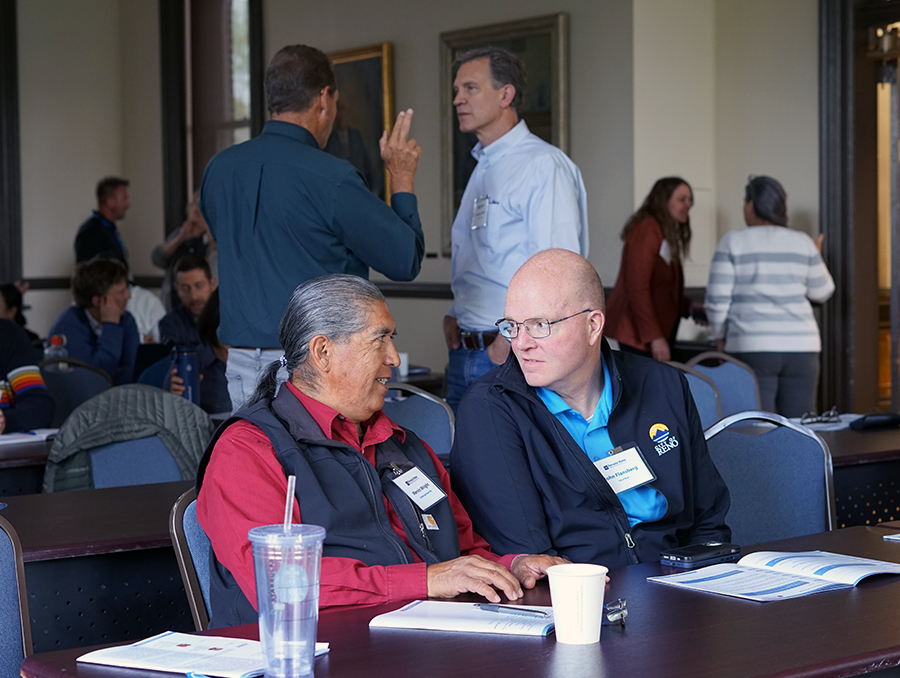
Mervin Wright, environmental manager for the Pyramid Lake Paiute Tribe, and John Flansberg, regional infrastructure administrator for the city of Reno, talk at the Truckee River Watershed Symposium April 26.
The Truckee River travels 140 miles from Lake Tahoe to Pyramid Lake, supplying 80% of all drinking water to Reno, Sparks and Washoe County areas. It supports plants and wildlife and it provides recreational activities. A significant natural and cultural resource, the Truckee River and its watershed also are increasingly difficult to understand and manage as climate change and other factors affect its condition.
Related Link
- Nevada Water Innovation Institute
To address those challenges, about 55 water managers and stakeholders — including representatives from the Pyramid Lake Paiute Tribe — gathered for the Truckee Meadows Watershed Symposium April 26 at the University of Nevada, Reno. Hosted by the University’s Nevada Water Innovation Institute (NWII), the event featured faculty research presentations as well as discussion of water management issues.
Vice President of Research and Innovation Mridul Gautam opened the conference with a call for a collaborative effort in managing the Truckee River and its watershed.
“Together, let’s explore ways to protect, preserve and enhance this precious resource for generations to come,” he said.
Conference attendees, in addition to receiving information from University researchers, expressed an interest in sharing their concerns about water management.
“We need more dialog like this so everybody has the whole picture,” John Enloe, Truckee Meadows Water Authority (TMWA) director of Natural Resources Planning & Management, said.
TMWA, Washoe County and other agencies already collaborate with the NWII, led by Krishna Pagilla, Civil & Environmental Engineering Department chair and professor, on projects around water reclamation technologies, water reuse research and more.
‘The story around us is one of very large fires’
Climate change — long-terms shifts in global and regional climate patterns — was a common theme through several of the research presentations. Increasingly large wildland fires, reduction in snowpack and changes in rainfall brought on by warmer and drier conditions are some of the issues University researchers discussed.
Geological Engineering Professor Scott McCoy, in his presentation on debris flows, started at the source.
“The story around us is one of very large fires,” McCoy said.
Severe wildfires such as the Caldor and Dixie fires of 2021 — in addition to loss of life, property damage and air quality issues — can lead to increased runoff that dumps sediment into streams and rivers, as well as mudslides, also known as debris flows, that can damage property and even threaten lives.
“Our approach (to dealing with debris flow) is local preparation, warning and potential evacuation,” McCoy said.
And that’s where University research can help: new data and analyses can help water managers, land managers and public safety officials make decisions in the face of natural disasters.
Working together
McCoy was one of 10 University faculty to present on topics ranging from “Paleoclimate Perspectives on Truckee River Streamflow” to “Understanding Differences in Perceptions of Risk, Water Resources and Regional Development.”
The conference also included two discussion panels, the first of which had researchers and stakeholders laying out their primary concerns over Truckee River water. Those ranged from water supply to water quality to water rights to the public messaging around issues of conversation and growth and more. Water managers also expressed an interest in sharing their information.
“There’s a lot going on in the water planning community that needs to be shared with academia,” Kimberly Rigdon, Western Regional Water Commission program manager, said. “We are considering the science from all these studies. We would really like to work together with the community to solve some of these problems.”
Research & Innovation
Mountain chickadees have remarkable memories. A new study explains why
The spatial memory of mountain chickadees is influenced by genetics and may need to evolve with a changing climate

Grand opening of new School of Public Health building
Ribbon cutting ceremony marks the new home of the School of Public Health at the Edna S. Brigham Building

Ask the Professor: Which bees will my garden attract?
A recently published article outlines the relationship between bee nutrition and flower visits

University of Nevada, Reno researcher takes on fight against deadly cattle tick
Pioneering researcher wins highly competitive Fulbright U.S. Scholar Award for collaborative international research project

Editor's Picks

Remembering the Holocaust

Earth Month events focus on increasing campus sustainably, gardening, thrifting and more

Anthropology doctoral candidate places second in regional Three-Minute Thesis Competition

A look at careers of substance and impact
Journalism alumna shares how she turned her passion for sports into a career
When an injury took Gianna Hearn (‘13) off the field, she set her sights on sports journalism

Grads of the Pack: Debi and Kaylie Smith
The mother-daughter duo is set to graduate with master’s degrees from the School of Social Work this month
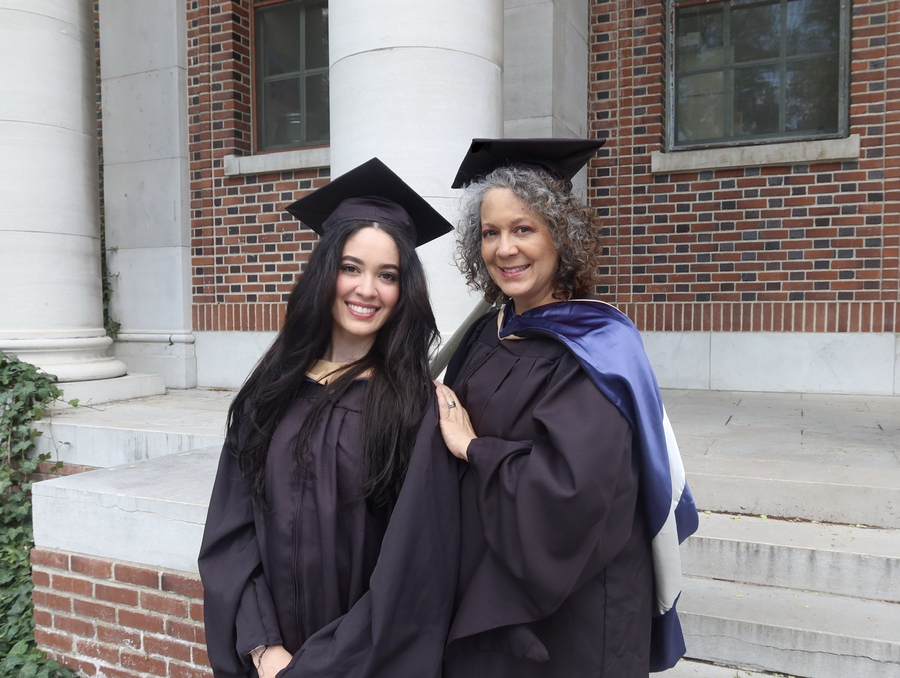
Office for Community Faculty brings education full-circle
Community faculty at the University of Nevada, Reno School of Medicine mentor the next generation of medical professionals
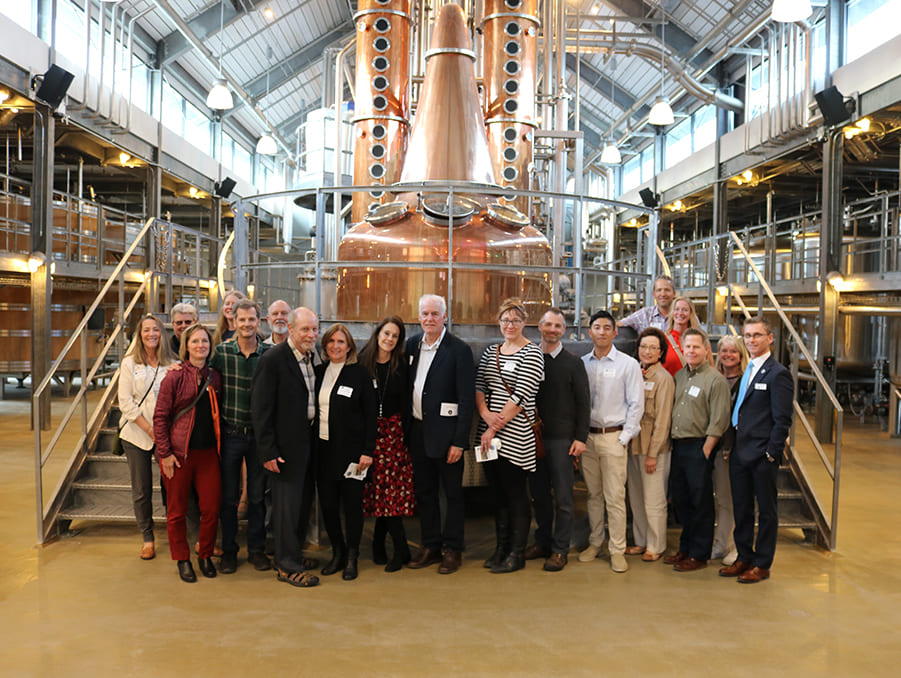
Family-friendly casino areas contain unhealthy levels of second-hand smoke, new study finds
Unsafe levels were found regardless of size, age or ventilation system in the facility, according to School of Public Health study
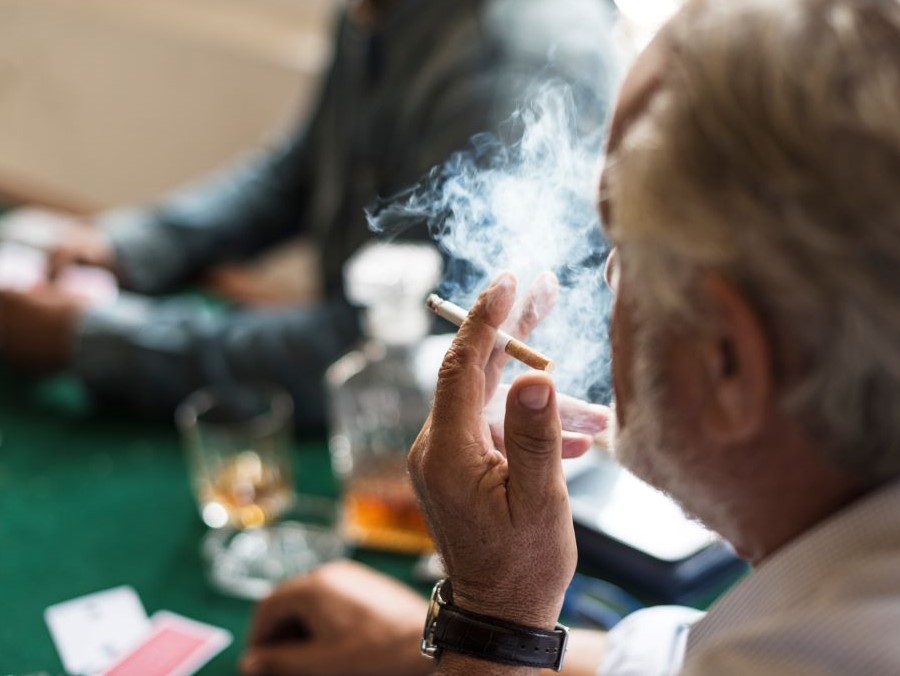
University’s 12th annual College Day pep rally encourages middle school students to attend college
University of Nevada, Reno and Sparks Middle School partnership promotes enthusiasm for learning and college attainment

Affinity Graduate Celebrations to take place before commencement
The Multicultural Center is set to hold the celebrations to honor campus affinity groups
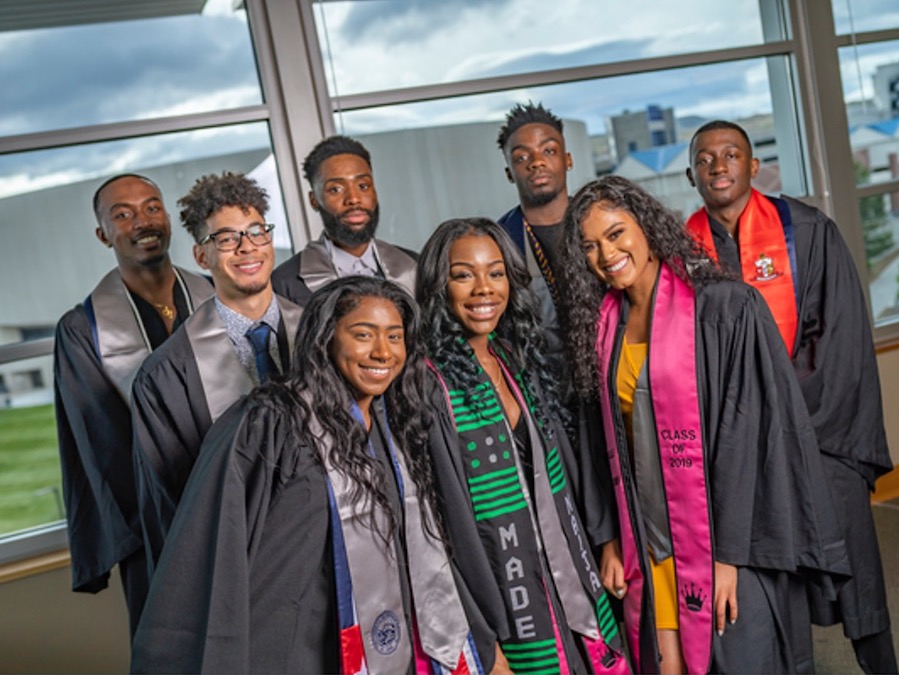
Nevada Dining Wins OZZI Box 2024 Earth Day Contest
Leading the way in sustainable dining by opting for reusables
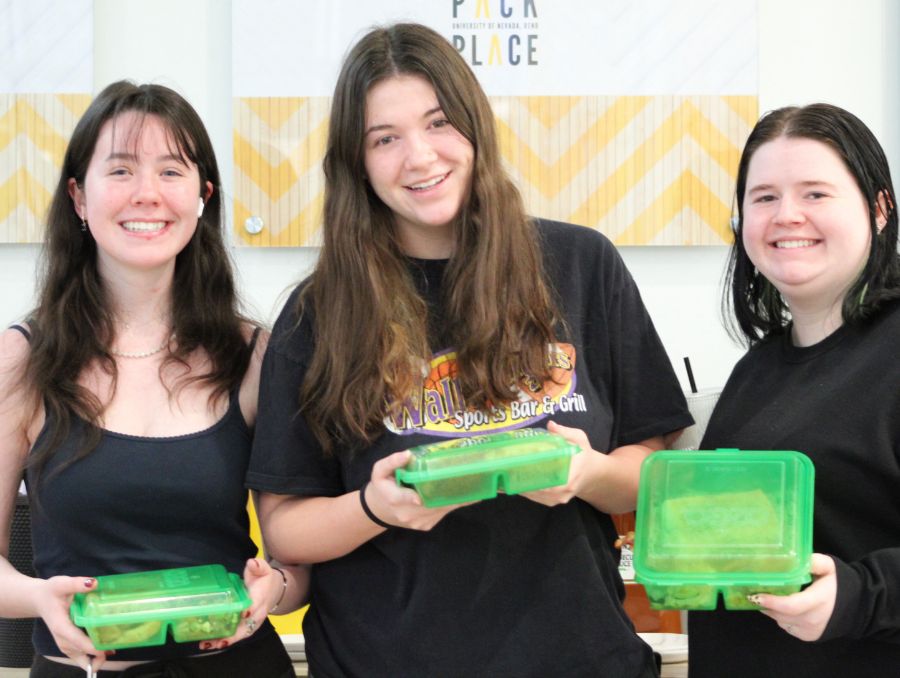
Grads of the Pack: Sabrina Ma
“I am passionate about inspiring others and finding a path to help make a difference”
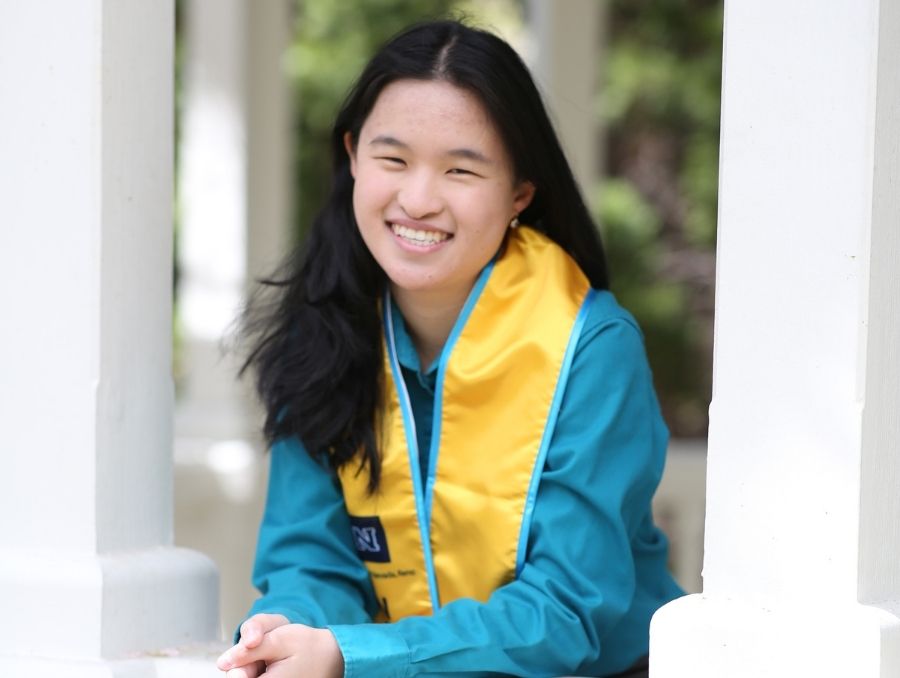

IMAGES
VIDEO
COMMENTS
Privolzhsky Research Medical University (Research Medical University of Volga region, Russian: Приволжский исследовательский ...
Welcome to PRMU. Privolzhsky Research Medical University, based in the city of Nizhny Novgorod, recognized as one of the best medical Universities in Russia. As the name suggests, PRMU focuses on a range of medical disciplines. There are 7 faculties: General medicine. Dentistry.
Founded in 1920, Privolzhsky Research Medical University is the pioneer and oldest public research medical university in Russia situated in the Nizhny Novgorod city in the Volga region of the Russian Federation. It is one of the two top research medical universities in Russia holding recognition worldwide.
Privolzhsky Research Medical University; Academic Mobility; International Cooperation Register; Заключения о международном сотрудничестве; Медики для немедиков; Перевод в ПИМУ; Оплата услуг; Сведения об образовательной организации
PRMU is the center of treatment/consultation activity of the region, one of the most important centers of medicine, education and culture of Volga Federal Region. Privolzhsky Research Medical University sees its mission as maintaining and strengthening the role of PRMU as one of the leading higher educational establishments in the country which ...
Description of Volga Research Medical University. Founded: 1920. Location: Nizhny Novgorod, Russia. Number of students: more than 3,000. Rating in Russia: 22. The Volga Research Medical University was founded in 1920 and for a long time had the status of an institute: during the years of World War II front-line doctors were trained here, much ...
The new name for Nizhny Novgorod State Medical University is Research Medical University of Volga region. More than 800 international students from 38 countries of Asia, Africa and Latin America (India, Sri-Lanka, Malaysia, Morocco, Tanzania, Kenya, Syria and others) are being trained in Medicine, Dentistry and Pharmacy. ...
Privolzhsky Research Medical University is one of the medical schools in the Russian Federation which is located in the city of Nizhny Novgorod.
About Privolzhsky Research Medical University. Privolzhsky Research Medical University (old-name: Nizhny Novgorod State Medical Academy) is a major center for training medical practitioners in one of the largest regions of the European part of Russia. The medical faculty was opened in 1920 as a faculty of Nizhny Novgorod University.
Welcome to Volgograd State Medical University! Founded in 1935, Volgograd State Medical University is among the 10 best medical universities in Russia with a long tradition of training doctors. In 2020 the University is celebrating its 85th Anniversary. Our Professors are well-known not only in Russia, but in the whole world due to their ...
2 Privolzhsky (Volga Region) Research Medical University, Ministry of Health of the Russian Federation, Nizhny Novgorod, Russia. PMID: 34173104 DOI: 10.1007/s10517-021-05202-7 Abstract The presence of mutations in the gene encoding isocitrate dehydrogenase (IDH1), parameters of pro- and antioxidant activity in glioma tumor tissue, and their ...
In 1930, the faculty was transformed into an independent medical institute (NMI), which in 1994 received the status of an academy (NGMA, NizhGMA), and in 2018 was reorganized into the Volga Research Medical University. During the existence of the faculty, research teams have formed that have created the largest medical schools.
2 Central Research Laboratory, Institute of Fundamental Medicine, Volga Region Research Medical University, Ministry of Health of the Russian Federation, Nizhny Novgorod, Russia. PMID: 32651808 DOI: 10.1007/s10517-020-04849-y Abstract The intensity of accumulation and excretion of atrial natriuretic peptide in myocytes of the right atrium in ...
3 Department of Molecular Biology and Genetics, Federal Research and Clinical Center of Physical-Chemical Medicine of Federal Medical Biological Agency, Moscow, Russia. 4 Research Institute of Physical Culture and Sport, Volga Region State University of Physical Culture, Sport and Tourism, Kazan, Russia.
Department of Medical Physics was established in June 1, 2015 at the Kazan Federal University. The first head of the department became professor Albert Aganov. The staff. First row (from left to right) Malinina Yu.V., Galiullina N.F., Aganov A.V., Galiullina L.F., Usachev K.S.
We utilize the world's largest scholarly papers database with 98,302,198 scientific publications and 2,149,512,106 citations to rank universities across 246 research topics. In the overall rankings we add non-academic prominence and alumni popularity indicators. Always check official university websites for the latest enrollment information.
EduRank.org is an independent metric-based ranking of 14,131 universities from 183 countries. We utilize the world's largest scholarly papers database with 98,302,198 scientific publications and 2,149,512,106 citations to rank universities across 246 research topics.
Privolzhsky Research Medical University. Formerly Nizhny Novgorod State Medical Academy (NizhGMA) founded in 1920
6 Department of Biochemistry, Kazan State Medical University, Kazan, Russia. 7 Sport Technology Research Center, Volga Region State Academy of Physical Culture, Sport and Tourism, Kazan, Russia. 8 Department of Theory and Methodology of Combat Sports, Volga Region State Academy of Physical Culture, Sport and Tourism, Kazan, Russia.
census. 3.2 million. The Grand Duchy of Moscow (Russian: Великое Герцогство Московское, Velikoye Gertsogetsvo Moskovskoye) and also known as Greater Moscow the Rurikid Grand Confederation or Rurikid Belt is one of the territorial administrations, of Grand Duchy and Grand Principality-level status of the Russian Empire.
40 Facts About Elektrostal. Elektrostal is a vibrant city located in the Moscow Oblast region of Russia. With a rich history, stunning architecture, and a thriving community, Elektrostal is a city that has much to offer. Whether you are a history buff, nature enthusiast, or simply curious about different cultures, Elektrostal is sure to ...
The Truckee River travels 140 miles from Lake Tahoe to Pyramid Lake, supplying 80% of all drinking water to Reno, Sparks and Washoe County areas. It supports plants and wildlife and it provides recreational activities. A significant natural and cultural resource, the Truckee River and its watershed ...
Privolzhsky Research Medical University. Formerly Nizhny Novgorod State Medical Academy (NizhGMA) founded in 1920 By browsing this site, you agree to our Plant Data Processing Policy Accept
University Admission Board Tel. +7 (831) 422-13-14, +7 (831) 422-13-95 lka.pimunn.net (for submitting documents) Working hours: Monday - Friday, 9.00 - 17.00 International Affairs Department Tel. +7 (831) 422-12-62 E-mail: [email protected] (for general information, visa issues) Working hours: Monday - Thursday 8:00-17:00, Friday - 8: ...